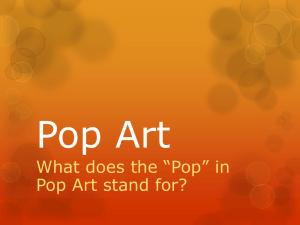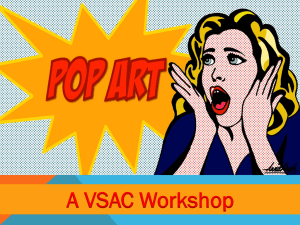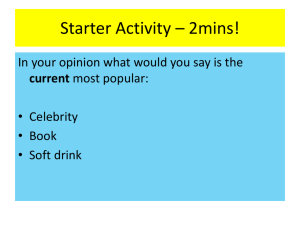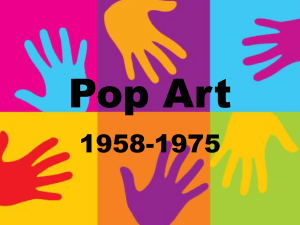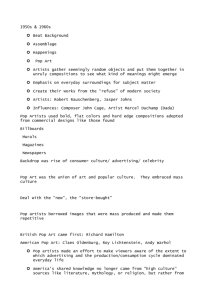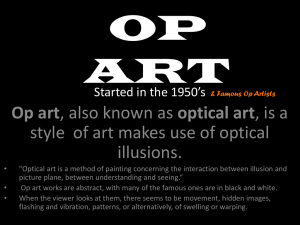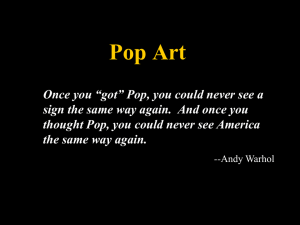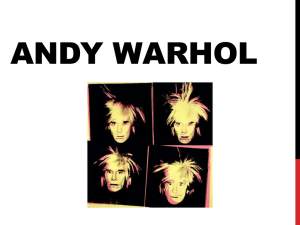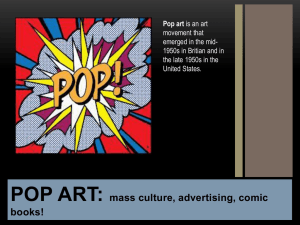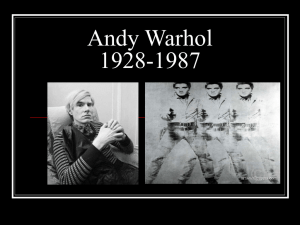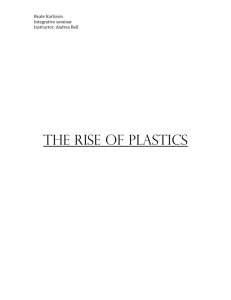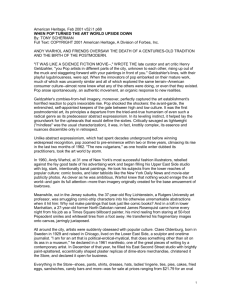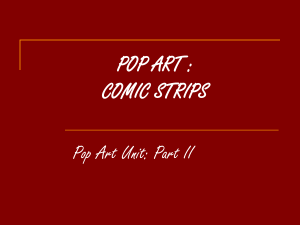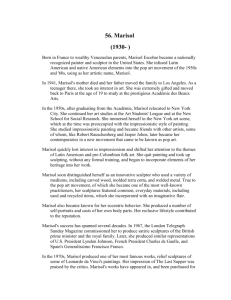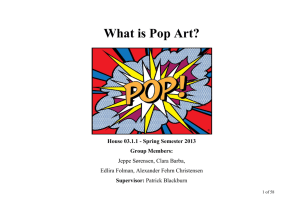Pop Art movement
advertisement
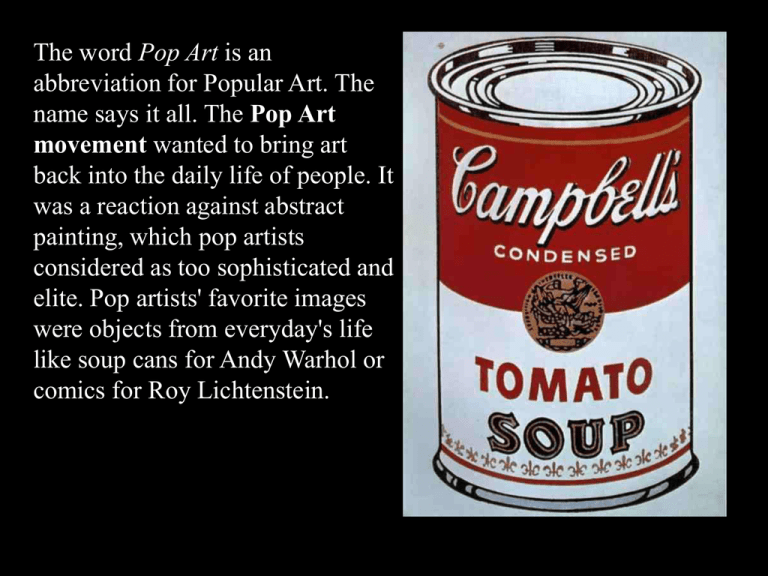
The word Pop Art is an abbreviation for Popular Art. The name says it all. The Pop Art movement wanted to bring art back into the daily life of people. It was a reaction against abstract painting, which pop artists considered as too sophisticated and elite. Pop artists' favorite images were objects from everyday's life like soup cans for Andy Warhol or comics for Roy Lichtenstein. Typical for the attitude of the Pop Art movement was Andy Warhol's use of serigraphy, a photorealistic, mass-production technique of printmaking. Pop Art intruded into the media and advertising. The differences between The fine arts and commercial arts were voluntarily torn down. An excellent example are the designs of music album covers in the sixties. The undoubted cult figure of Pop Art was Andy Warhol (19281987). Other great names are Jaspar Johns, Robert Rauschenberg, David Hockney, Claes Oldenburg, Roy Lichtenstein, Georg Segal, Wayne or James Rosenquist. The Pop Art movement was mainly an American and British art movement.. Pop art, like pop music, aimed to employ images of popular as opposed to elitist culture in art, emphasizing the banal or kitschy elements of any given culture. Pop art at times targeted a broad audience, and often claimed to do so. However, much pop art is considered very academic, as the unconventional organizational practices used often make it difficult to comprehend. Pop art: an art style developed in the 1960s that drew visual inspiration from popular visuals such as tabloids, cartoons, ads, packaging, and billboards. Pop artists enlarged their images to comment on the importance of media in American life. Andy Warhol, Claes Oldenburg, and Roy Lichtenstein were three of the most famous Pop artists. Andy Warhol (August 6, 1928 – February 22, 1987), was an American artist, avant-garde filmmaker, writer and social figure. Warhol also worked as a publisher, music producer and actor. With his background and experience in commercial art, Warhol was one of the founders of the Pop Art movement in the United States in the 1950s. Warhol is best known for his extremely simple, larger-than-life, high-contrast color paintings (silk-screen prints) of packaged consumer products, everyday objects, such as Campbell's Soup, poppy flowers, and the banana appearing on the cover of the rock music album The Velvet Underground and Nico (1967), and also for his stylized portraits of twentieth century celebrity icons, such as Marilyn Monroe, Elvis Presley, Jacqueline Kennedy Onassis, Judy Garland, and Elizabeth Taylor. Outside the art world, Warhol is best known for the quotation "In the future everybody will be world-famous for 15 minutes". He later told reporters, "My new line is, 'In fifteen minutes, everybody will be famous'". "Roy Lichtenstein was the master of the stereotype, and the most sophisticated of the major Pop artists in terms of his analysis of visual convention and his ironic exploitation of past styles. The work for which he is now known was the product of a long apprenticeship. (1923-1997) Absurd and kitsch, this massive over-sized version of a twentieth –century icon evokes a sense of incredulity. The artist’s desire to imitate and displace one of the most potent symbols of American culture enhances its power and impact. Not only in its Claes Oldenburg (1929 unconventional subject matter but also in its - ) soft form it crushes all preconceived notions Giant Hamburger 1962, of traditional sculpture being solid and hard. Printed sailcloth stuffed with foam, h52 x w82 7/8 in,Art Oldenburg was an American Pop artist Gallery of Ontario, Toronto concerned with making art from materials and precuts from the commercial environment He wanted his art to reflect contemporary, everyday life in all its complexity and change. This work clearly takes it’s cue from the American ‘fast-food’ empire that was developing, at a meteoric speed, in the 1960’s. In 1964 Oldenburg established a shop in Green Street, New York, from which he sold painted plaster replicas of food and other commodities. In the following decade of the sixties, Marisol found herself in the sympathetic company of Pop artists Roy Lichtenstein and Andy Warhol, despite the fact that she rarely used strictly commercial items in her works. Marisol participated in two of Warhol’s movies – The Kiss and 13 Most Beautiful Girls. Exploiting the banality of popular culture was not the sole focus of Marisol’s work: wry social observation and satire have always been integral to her sculptures. As the only female artist within the Pop enclave, she managed to infuse a great deal of individuality in her sculptures – usually through the means of inserting or adopting different identities. One of her most well known works of this period was The Party, a life-size group installation of figures at the Sidney Janis Gallery. All the figures, gathered together in various guises of the social elite, sported Marisol’s face. It is intriguing to note that Marisol dropped her family surname of Escobar in order to divest herself of a patrilineal identity and to "stand out from the crowd." QuickTime™ and a decompressor are needed to see this picture. Objectives: Students will * Create portrait with contour line - drawing from observation & plexi- glass * Contrast warm and cool colors - work with pattern and textures * Develop skills in using elements and principles of design
